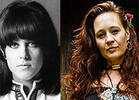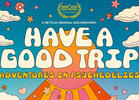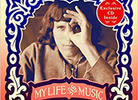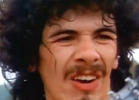
Most people think the music that came out the San Francisco Bay Area in the late '60s-early '70s was strictly psychedelic, but the two-part MGM+ series San Francisco Sounds: A Place in Time considerably expands on that subject, especially in the second episode.
Directed by Alison Ellwood and Anoosh Tertzakian (its their follow-up to Laurel Canyon), the first half is a pretty typical roill call of Fillmore West bands that came out of that scene: Grateful Dead, Jefferson Airplane, Big Brother and the Holding Company (with Janis Joplin), Santana, Quicksilver Messenger Service, the Charlatans, Moby Grape. Almost all of them were signed by major record companies with various degrees of success.
Despite the utopian vision produced by the collision of LSD and hippie garage rock, the filmmakers seed the story with doubt, noting the peace-and-love San Francisco crowd didn't dig Jimi Hendrix burning and destroying his guitar on stage at the Monterey Pop festival on June 18, 1967. "When that happened there was a frozen moment out there in the audience," Jack Casady recalls. "Everybody looked at everybody to see what was going on now. The music has sort of taken a left turn in another direction." Pete Townsend, competing with Hendrix, first destroyed his guitar during The Who set. Hendrix one-upped Townsend.
In October of that year jaded Haight-Ashbury veterans held a "Death of the Hippies" mock funeral after national media began to put a negative spotlight on what was being called "The Summer of Love."
"The peace-and-love San Francisco crowd didn't dig Jimi Hendrix burning and destroying his guitar on stage at Monterey Pop."
Music was a huge part of it, as were the drugs and opposition to the War in Vietnam. In 1969, many of the bands played at Woodstock and some at Altamont, where four concertgoers died.
Eventually, the bands began splinter. Janis Joplin was the first to break away (and die in 1970), followed by members of Jefferson Airplane that led to the the formation of Hot Tuna (Casady's band with Jorma Kaukonen) and Jefferson Starship.
The biggest spin-off was Santana into Journey. Neal Schon and Gregg Rolie didn't like Santana's jazzy, spiritual shift on their fourth album, so they started their own band
By 1972, Santana drummer Michael Shrieve says, "Psychedelia had run its course. People wanted something more rhythmic." That was already being provided by Bay Area soul group Sly & the Family Stone. East Bay band Tower of Power also pointed to the decade's new funky direction. Other bands that came out of the '70s Bay Area included Creedence Clearwater Revival, Steve Miller Band, Boz Scaggs and the Doobie Brothers, who bookend the latter part of this story.
With divisive politics at home and wars abroad, Shrieve predicts, "There's going to be another hippie movement. I think everyone could use a good hit of acid."
MORE 2023 STREAMING SERIES
• Platonic






